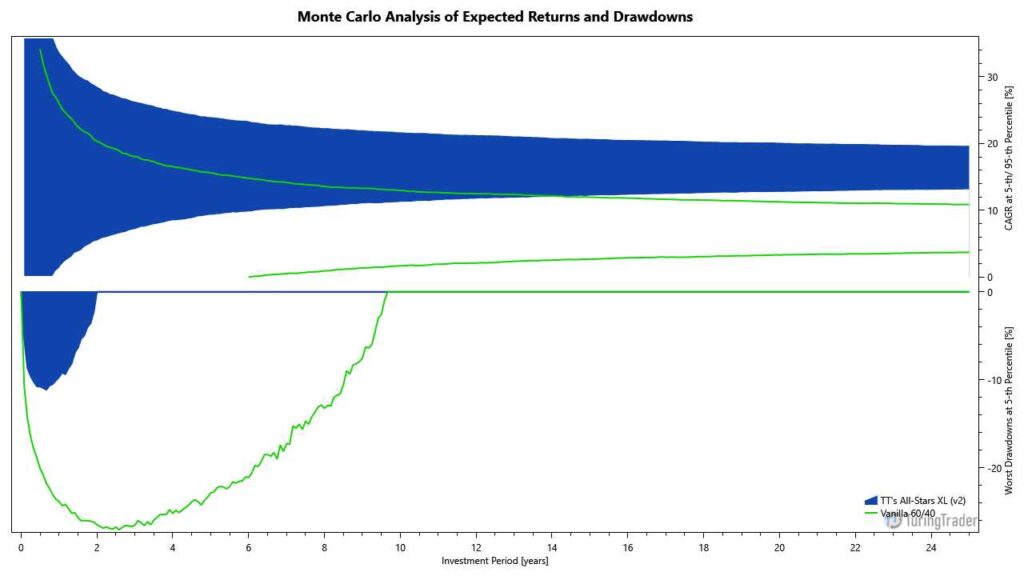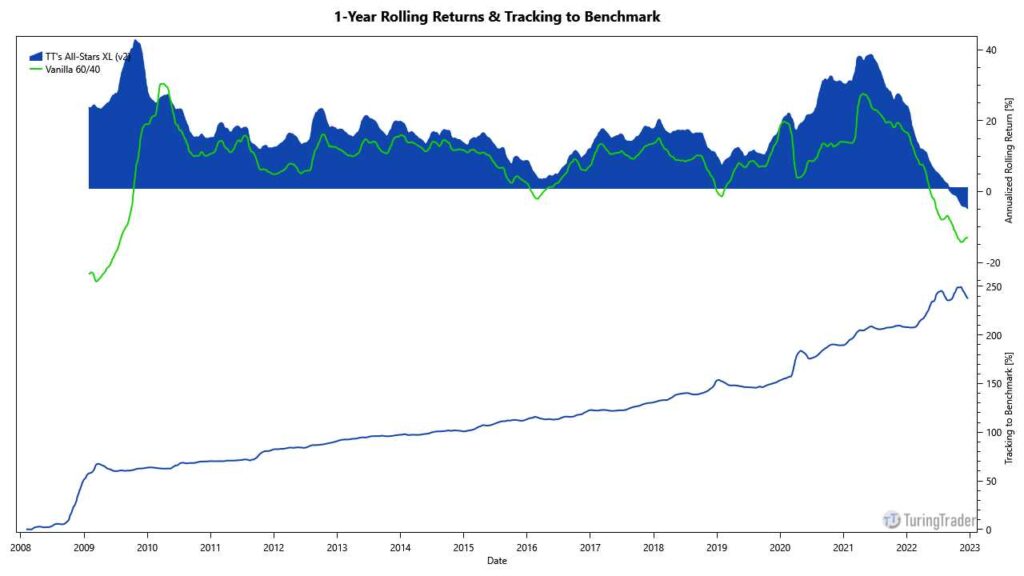Summary
- Objective: growth w/ contrarian exposure
- Type: mean-reversion strategy
- Invests in: ETF tracking the broad stock market
- Rebalancing schedule: daily
- Taxation: 100% short-term capital gains
- Minimum account size: $1,000
Larry Connors has over 30 years of experience in the financial industry. For many years, he has provided data-driven research to investors, hedge funds, and trading firms around the world. Larry developed the VIX RSI strategy together with Cesar Alvarez and published it in 2009 in their book Short Term Trading Strategies That Work.
Connors’ VIX RSI is a mean-reversion strategy, based on the concept of markets overreacting to news and reverting to their mean in the short term. The key idea of this strategy is to combine the RSI indicator with the VIX volatility index to identify rapid market sell-offs, and take a profit when they snap back.
VIX RSI takes long-only positions in the S&P 500. The strategy enters a new position when the VIX peaks, while the RSI indicator is very low. The strategy then holds the position for only a few days, until the RSI indicator regains its strength. An additional trend filter makes sure only to take positions in overall bullish markets.
This is a short-term trading strategy, which may enter or exit positions daily, requiring continuous oversight.
Performance
This table shows the portfolio’s key performance metrics over the course of the simulation:
The following chart shows the portfolio’s historical performance and drawdowns, compared to their benchmark, throughout the simulation:
This chart shows the portfolio’s annual returns:
The following charts show the Monte-Carlo simulation of returns and drawdowns, the portfolios 12-months rolling returns, and how the portfolio is tracking to its benchmark:


Asset Allocation
The portfolio last required rebalancing after the exchanges closed on @last-rebal@. Due to fluctuations in asset prices, the exact allocations vary daily, even when no rebalancing occurred. The current asset allocation is as follows:
Sign up for our FREE Basic membership to see the asset allocation.
Sign up for our FREE 14-day trial to see the asset allocation.
Strategy Rules
The operation of VIX RSI can be summarized as follows:
- trade an S&P 500 ETF
- open position, if
- S&P 500 trades above its 200-day moving average
- 2-period RSI of VIX is above 90
- today’s VIX open is greater than yesterday’s close
- 2-period RSI of the S&P 500 is below 30
- exit position, if 2-period RSI of the S&P 500 closes above 65
For more detailed information on these rules and the rationale behind them, refer to Connors’ book Short Term Trading Strategies That Work. The full C# source code can be reviewed as part of the TuringTrader.org open-source project. Our implementation of VIX RSI implements the rules as published in the book. However, we slightly altered the entry and exit points. Further, instead of trading on the market close, we modified the strategy to trade on the next market open. This change frees investors from the requirement of being in front of a computer at the market close and seems more suitable for our readers.
Like other mean-reversion strategies, VIX RSI trades infrequently. This leads to poor utilization of capital and low returns.
Diversification
While the S&P 500 index is diversified across many companies and industry sectors, it still represents only a single asset class. Even though VIX RSI‘s equity curve is vemostly smooth, it’s tail-risk is identical to holding the S&P 500 index. This is augmented by the strategy aiming to by pull-backs.
Returns & Volatility
The equity curve shows how Connor’s strategy is performing smoothly in bullish and sideways markets while staying flat in prolonged bear markets. However, the strategy has drawdowns aligned with major down-swings in the S&P 500. The strategy trails the S&P 500 by a lot, but it still has higher risk-adjusted returns, faster recovery, and a very low beta.
The Monte-Carlo paints a slightly different picture. Here it seems that the likelihood of positive returns has not improved, and that drawdowns did not decrease enough to justify the meager returns.
Account & Tax Considerations
VIX RSI typically holds positions for only a few days, resulting in a large number of wash sales and short-term capital gains. Therefore, the strategy works best in tax-deferred accounts.
As Connors’ strategy only invests in a single ETF, it can be used successfully in accounts of about $1,000 or more.
